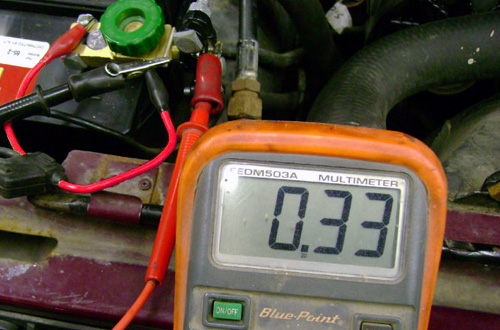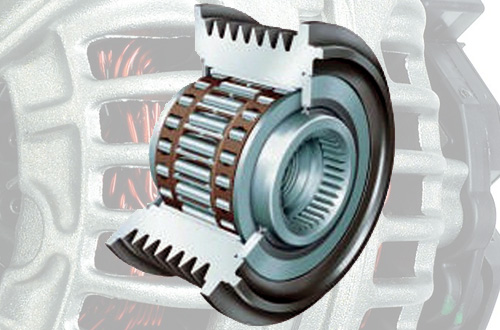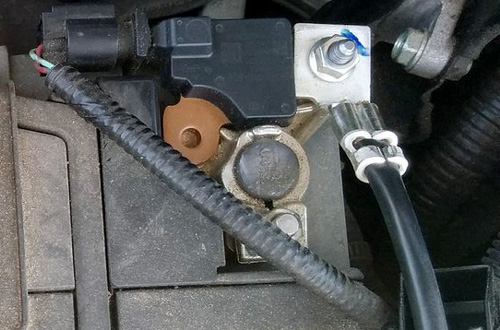Checking the charging voltage is simply not enough when diagnosing charging system issues. More often than we would care to beleive, when battery voltage is measured with an engine running, the alternator is condemned as the issue. While it may be correct that the alternator is not charging, but why aren’t we asking why?
On some system it’s perfectly normal to see voltages as low as 13v, where on other systems 13.v may indicate an issue. The next car may be functioning perfectly fine with a charging voltage of 16v, or completely turn off and show battery voltage.
This discrepancy in charging voltage is due to the fact that in most modern vehicles, the engine management system controls the alternator in an attempt to improve fuel economy (reducing parasitic load on the crankshaft) amongst a myriad of other functions such as ambient temperature, distance from the battery etc.
Another factor determining charging voltage are automatic transmissions with five or six speeds that can significantly reduce engine speed when cruising. Many modern engines operate well under 2,000 rpm until they reach speeds of about 100km/hr. Consequently, if the alternator doesn’t maintain rated charging voltage at lower engine speeds, the battery will discharge under heavy accessory loads. In most cases of undercharging, the alternator may have an incorrect diameter pulley installed, the drive belt may be slipping or the alternator itself might be under capacity for the vehicle application.
Although load-testing an alternator provides a quick way to test for drive belt slippage, keep in mind that an alternator can easily be overheated when testing for maximum output during low-speed operation for an extended period. Most alternators will not be able to keep up with the load when idling, and in some cases, lack of cooling compounds the problem even further. Some systems might even stop charging if an extreme load is detected and will set a fault code.
The other critical tool to effectively diagnose todays alternator is a scan tool. On older vehicles, the alternator light would illuminate when the alternator output or battery voltage dropped below a preset value. The battery light on modern vehicles, however, is controlled by data and trouble codes. This is why a scan tool is essential in diagnosing a charging system, as these codes can lead to a faster and more accurate diagnosis. Fault codes for the alternator can be found in the engine control module and the modules that control the distribution of power to the vehicle. In addition, most modules on a vehicle will set a fault code if low system voltage is detected.
Testing the Battery
The age-old rule of thumb that states 12.6 volts indicates a fully charged battery and 12.2 volts means it is 25 percent charged, is starting to change with some modern batteries and charging systems.
If there is a bad cell, for example it’s dead or weak, normal charging voltage can’t be achieved. The alternator will overcharge the remaining cells and boil the electrolyte in the other cells. At the other extreme, a battery that is sulfated due to being undercharged or not seeing constant use will maintain normal charging voltages. The symptoms of a sulfated battery are that it charges very quickly and produces a very low discharge rate.
Fewer and fewer batteries allow the technician to view electrolyte levels or test individual cells. This is why testing with an electronic conductance tester that measures cold cranking amps is the most accurate way to assess the condition of the battery.
Because new batteries typically test as much as 25 percent higher than their rated capacities, a recently replaced battery with a bad cell can occasionally pass both a conductance and a load test.

Parasitic Drain
As a rule, the key-off current drain on most late-model vehicles should be less than 120mA. If a draw is depleting a battery, it can mean extra stress on the alternator and charging system. But, on some vehicles, it might be normal to have even greater draws for up to1 hour after the key has been removed from the ignition.
During this period, the serial data buses could be communicating and performing some digital housekeeping. Also, systems like air ride, evaporative emissions and auxiliary water pumps could still be active long after the vehicle has been parked. This is why in some service information for modern vehicles, an OBD breakout box and a scan tool are needed to solve some intermittent parasitic power drains.

Clutch Pulleys
Many late-model vehicles use a decoupler pulley on the alternator. These new pulleys allow the alternator to “free-wheel” or “overrun” when the belt suddenly slows down. This prevents the belt from slipping and reduces vibration. Best of all, in this scenario, the system needs less tension and a narrower belt can be used. This can result in a 2% fuel economy improvement. Unfortunately, these pulleys have a limited lifespan due to how they operate internally.
Some replacement alternators come without a pulley or a solid pulley. If the replacement alternator does not come with a new pulley, be sure to install the correct pulley with it. If not, the replacement alternator can fail sooner than expected.
If you don’t see the recommended voltage when you check charging voltage at the battery with the engine idling, check the wiring connections at the alternator — not just visually or by wiggling the wires or connectors, but checking for excessive resistance by doing a voltage drop test. Many so-called alternator problems turn out to be nothing more than a bad connection at the alternator or a bad wiring harness.

Accessory Installation
If you see a modern vehicle that measures the life or temperature of the battery (usually signified by a current clamp on a battery terminal), it is a bad practice to use the positive and negative battery terminals to power aftermarket accessories. The extra connections can cause the battery to incorrectly report the state of discharge, despite a normal battery condition. This can cause overcharging and/or codes to be set that may cause the charging light on the instrument cluster to illuminate.